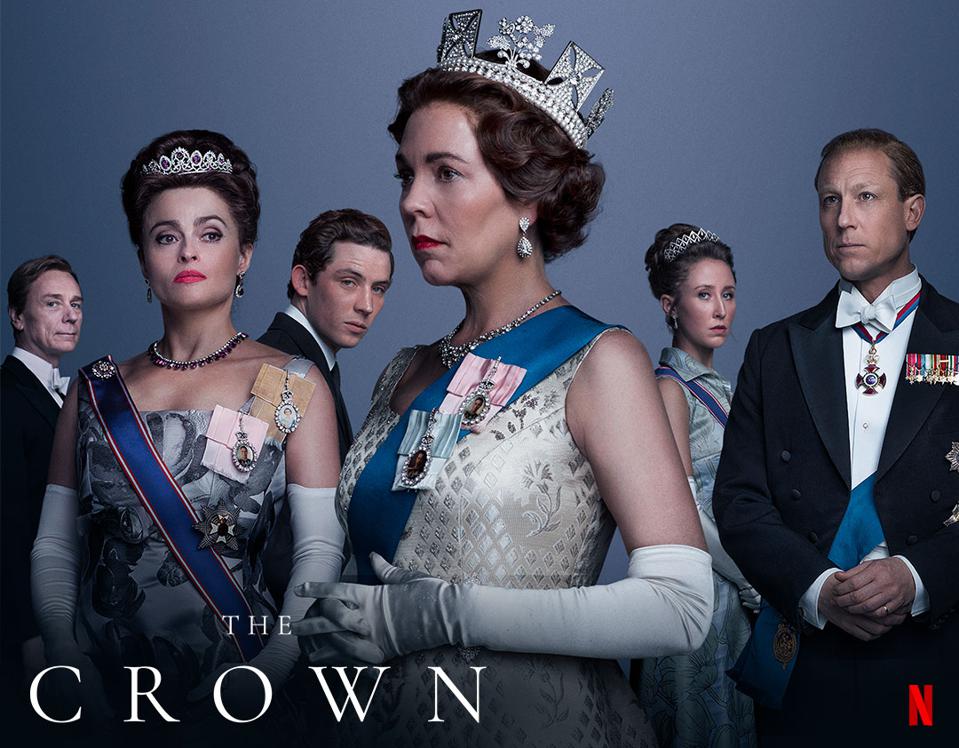The fourth season of “The Crown” was recently released on Netflix. Photo from Forbes.com.
In promotion for the fourth season of “The Crown,” which hit Netflix on Nov. 15, the streaming service released a poster that featured three famous female faces in the foreground. Queen Elizabeth II was in the middle with Margaret Thatcher to her right and Princess Diana to her left, with Prince Charles in Diana’s background. At the top of the poster were the words, “change will challenge tradition.”
“The Crown” is one of Netflix’s most popular shows and one of my personal favorites. Besides great writing and production value (the first season cost a reported $130 million to make), the most thrilling part of the show is the casting. Given that it spans the queen’s long reign, creator, writer and showrunner Peter Morgan made the decision that it would be better to just replace all of the actors every two seasons rather than try to age them up through all of the six planned seasons.
In the first two seasons, Queen Elizabeth II was played by actress Claire Foy, who won multiple awards for her portrayal. “The Favourite” Oscar winner Olivia Colman took on the role for seasons three and four and Imelda Staunton, perhaps best known to Americans for her work as Dolores Umbridge in the “Harry Potter” series, will take on the role for the final two seasons.
While the casting process is certainly an interesting one, a positive of the show spanning so many years and historical periods is that audiences get to look forward to portrayal of major real life events and how “The Crown” will tackle them. From its very first episodes, fans, including myself, were wondering who would be playing Princess Diana and how her story would play out. Given how beloved Diana is, it seemed like a make-or-break task for Morgan and his team, but I believed they were up to it.
As much love as people have for Diana is about as much hatred they tend to have for former Prime Minister Margaret Thatcher, so to have them introduced in the same episode was certainly exciting and interesting.
In the first season, one of my favorite performances was that of John Lithgow as Sir Winston Churchill, who won an Emmy for his work. Churchill was the first prime minister of the queen’s reign and their weekly meetings were some of the best scenes in the show. A few more prime ministers were cycled through until the third season when Harold Wilson, portrayed by BAFTA TV winner Jason Watkins, assumed the position. As someone who didn’t even know that the queen holds weekly meetings, or audiences, with her prime ministers, the relationships they form and the bridges and gaps between them are some of the most exciting aspects of the show.
Needless to say, I wanted to see how the relationship between Elizabeth and Thatcher would play out, and it was very clear from the first two episodes that they would not get along.
Gillian Anderson was cast as “The Iron Lady,” and having enjoyed her work in “Sex Education” among other projects, I was curious to see just how she’d transform into Thatcher. With some amazing work from the hair and makeup department and Anderson’s adoption of a much deeper, aged voice, she’s almost unrecognizable. I’d be surprised if she isn’t showered in nominations in the upcoming awards season.
In complete opposition, the sweet and charming innocence played up by Emma Corin makes Diana the “the people’s princess” on-screen as well. The juxtaposition of these two new characters is shown in the second episode, “The Balmoral Test,” where Thatcher and her husband worry about a fabled test and initiation of sorts that the royal family conducts with guests on their first visit to the queen’s Balmoral Castle in Scotland. When invited, the Thatchers quickly fail and flee early in the weekend. But Prince Charles invites Diana, unbeknownst to the rest of the family.
As Charles said of Diana towards the end of the episode, “in the history of Balmoral, no one has ever passed the test with such flying colors.” He is urged to propose to Diana, which he does in the next episode, despite his very clear love that remains for his married ex-girlfriend Camilla Parker Bowles. I don’t think it’s much of a spoiler to say that the marriages involved don’t end well.
With new beginnings came some major endings as well. The biggest came in the first episode when Lord Mountbatten, the uncle of Prince Philip, who was lovingly referred to as “Dickie,” is assasinated by the Irish Republican Army. He often served as an advisor and father figure of sorts to both his nephew and Charles, and his loss was felt heavily by the family and in the tone of the show.
“Change will challenge tradition,” the poster read. Mountbatten was a big representation of that tradition and with Thatcher promising to declare war on the IRA at the end of the first episode, there’s definitely a sense that change and challenges are ahead.
I’m going to take my time watching the rest of the season to really appreciate the brilliance of the show and the last episodes with this cast, but after a year of waiting, I’m glad to see that everything seems to be on the right track for another brilliant season of “The Crown.”

